-

-
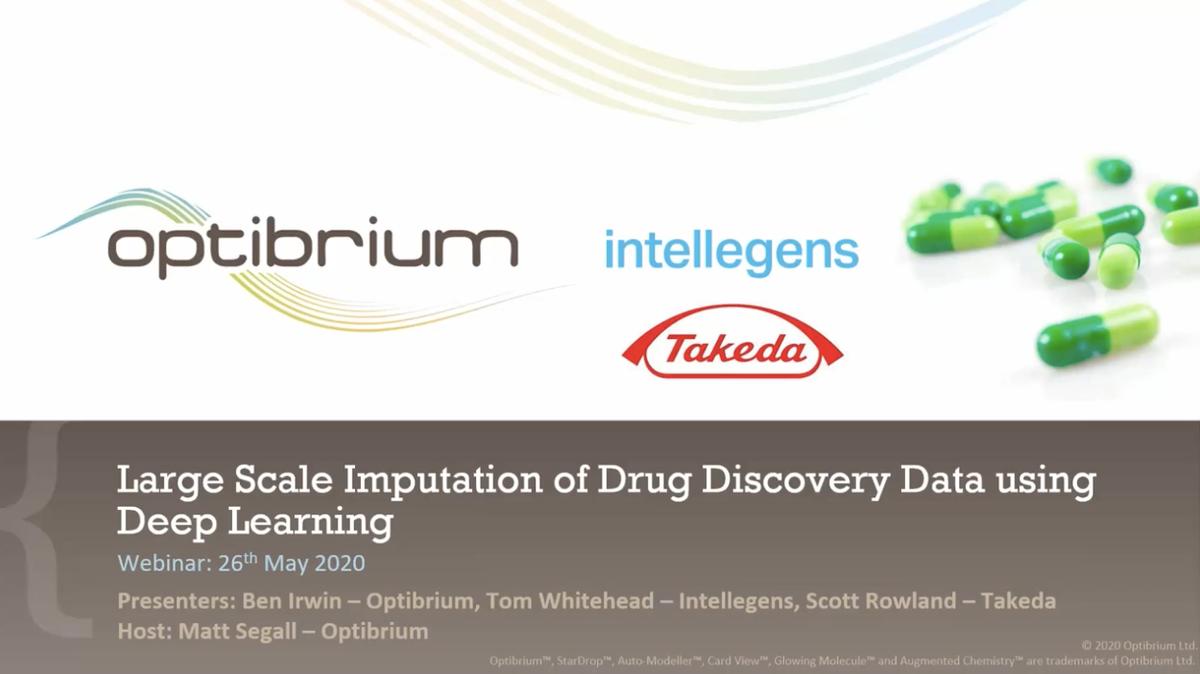
-
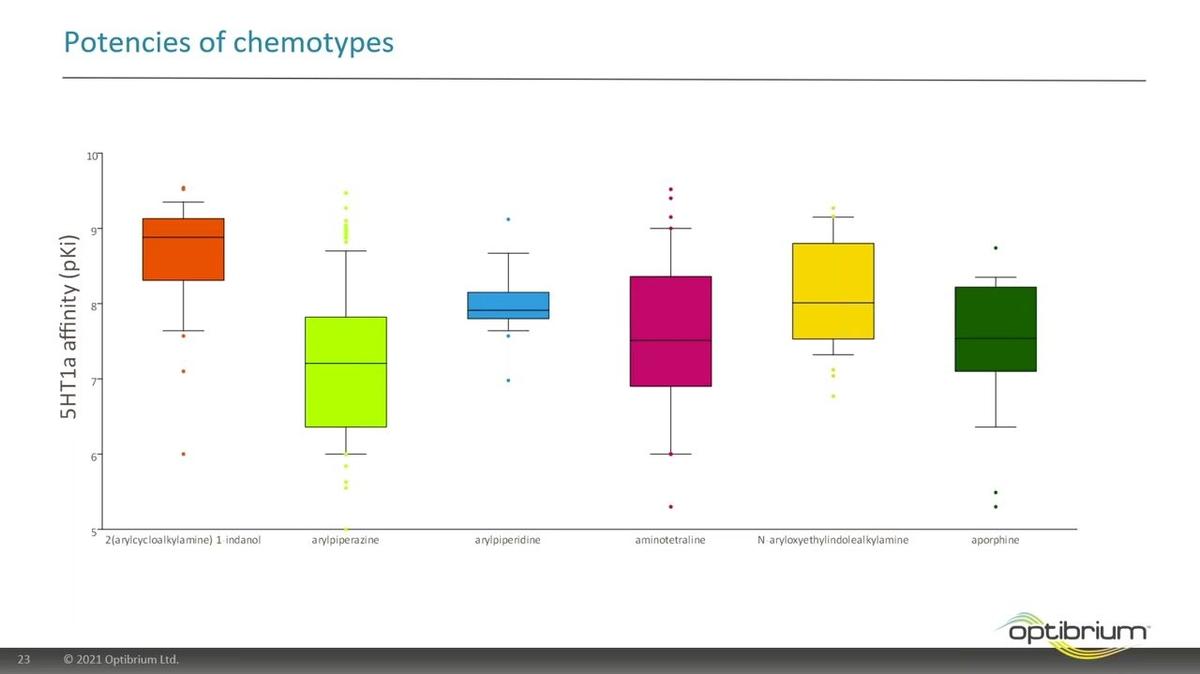
Data Visualisation.mp4
This webinar looks at how we can use data visualisation in an impactful and effective way to communicate many dimensions of information. We will illustrate some of the ways that we can achieve this and discuss visual methods to guide our decisions in drug discovery.
-
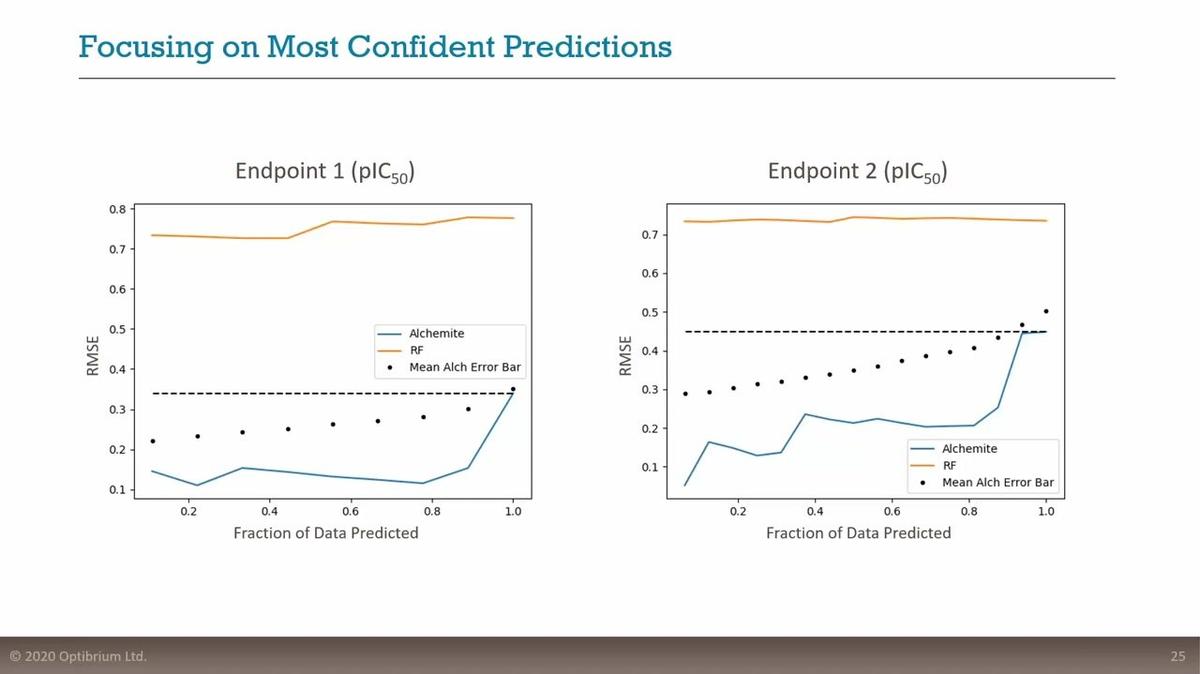
-
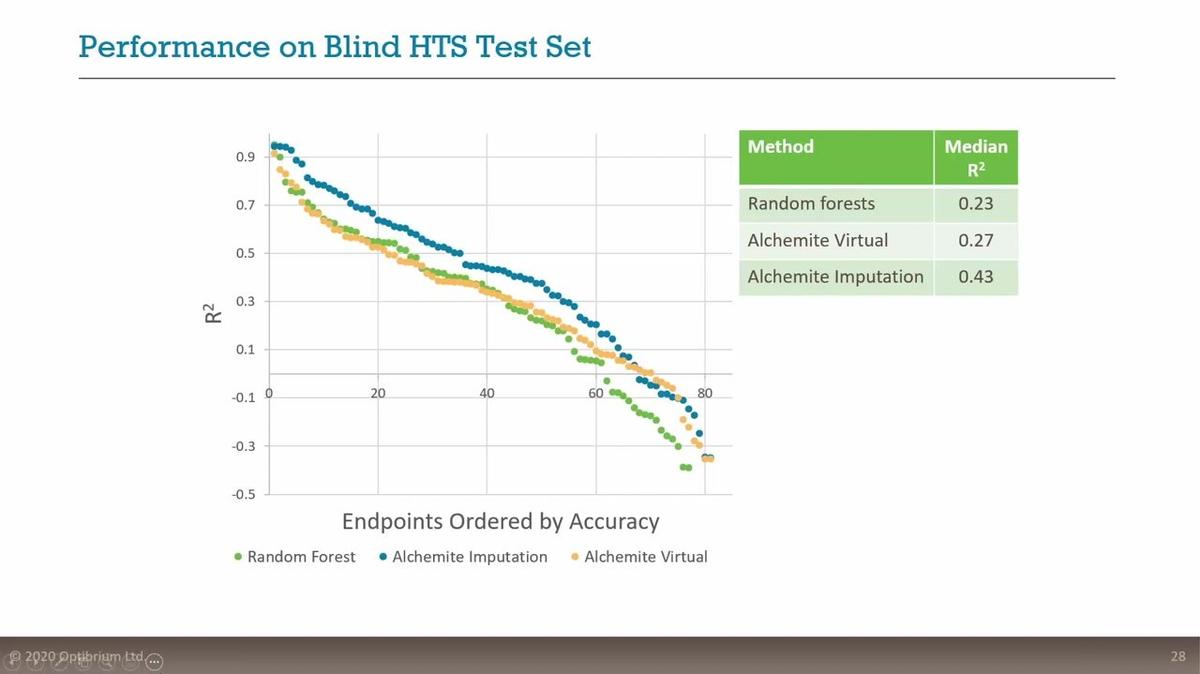
-
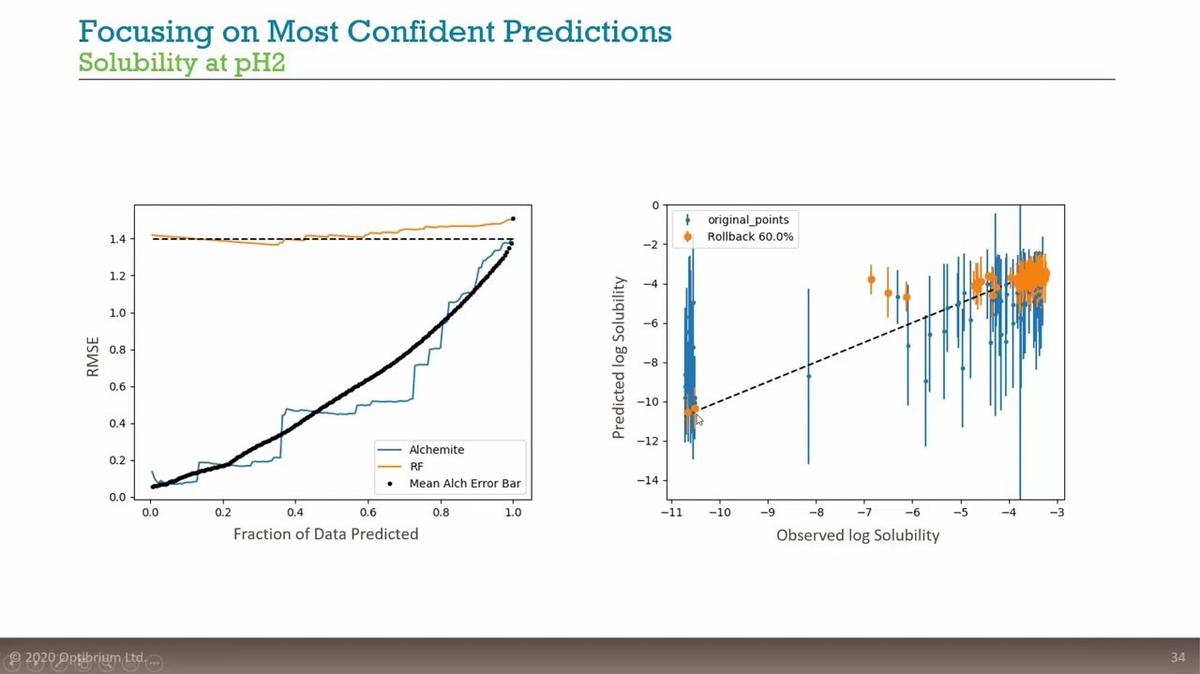
-
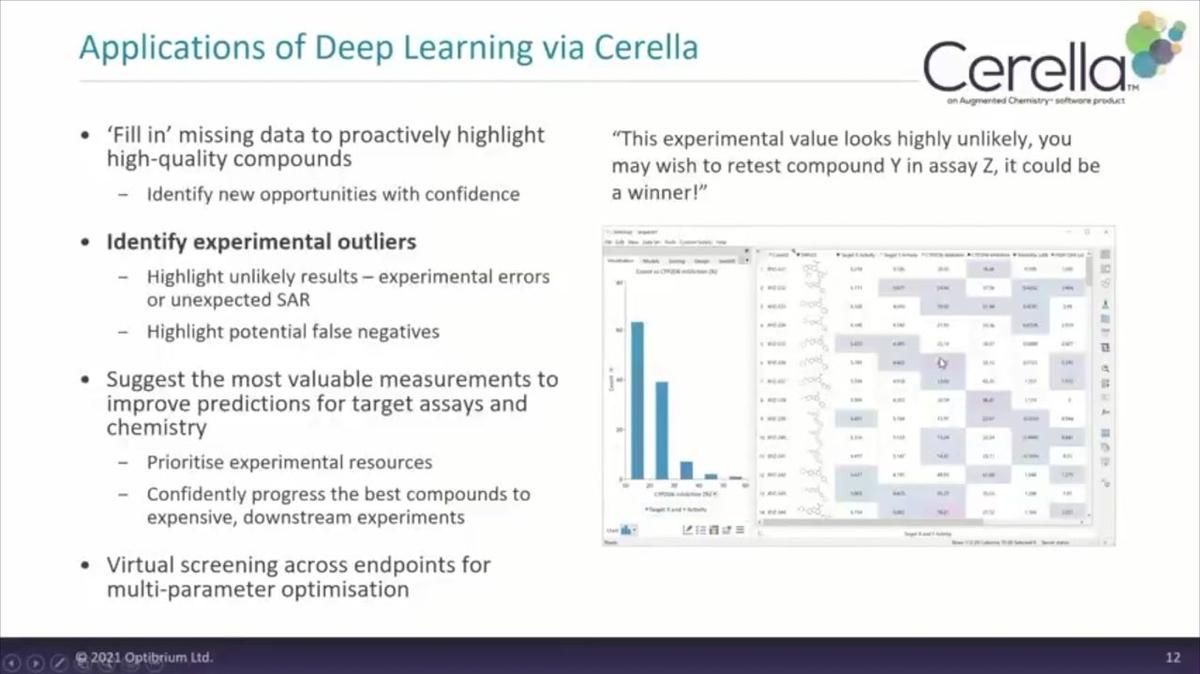
-
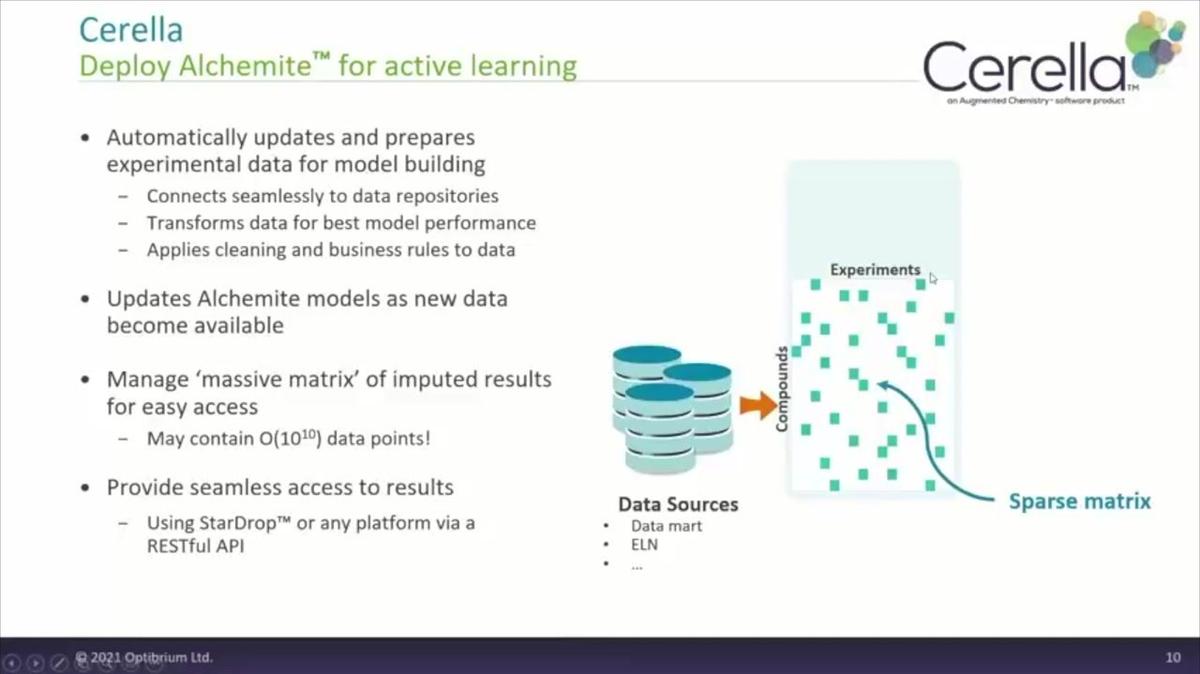
-
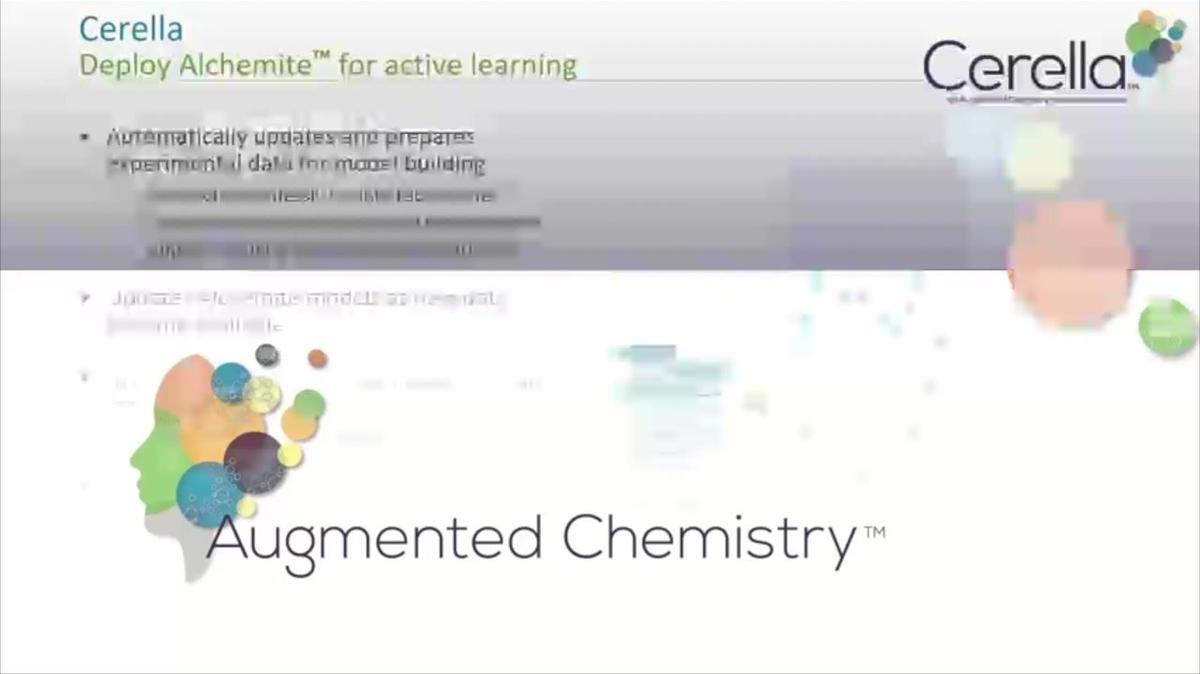
-

-

Webinar - eSim 3D
In this webinar Dr Ajay Jain discussed eSim-3D, a novel ligand-based drug design approach based on electrostatic-field and surface-shape similarity coupled with unique conformational search capabilities, offering unprecedented accuracy and performance. The eSim method combines electrostatic fiel...
-

Webinar - Phenaris In Silico Transporter Modelling
In this Webinar, Gerhard Ecker outlined computational approaches to predict the transporter interaction profile of compounds in order to minimize the risk of failures in drug development. The methods presented comprised classical machine learning models as well as deep learning approaches. The la...
-

-

-
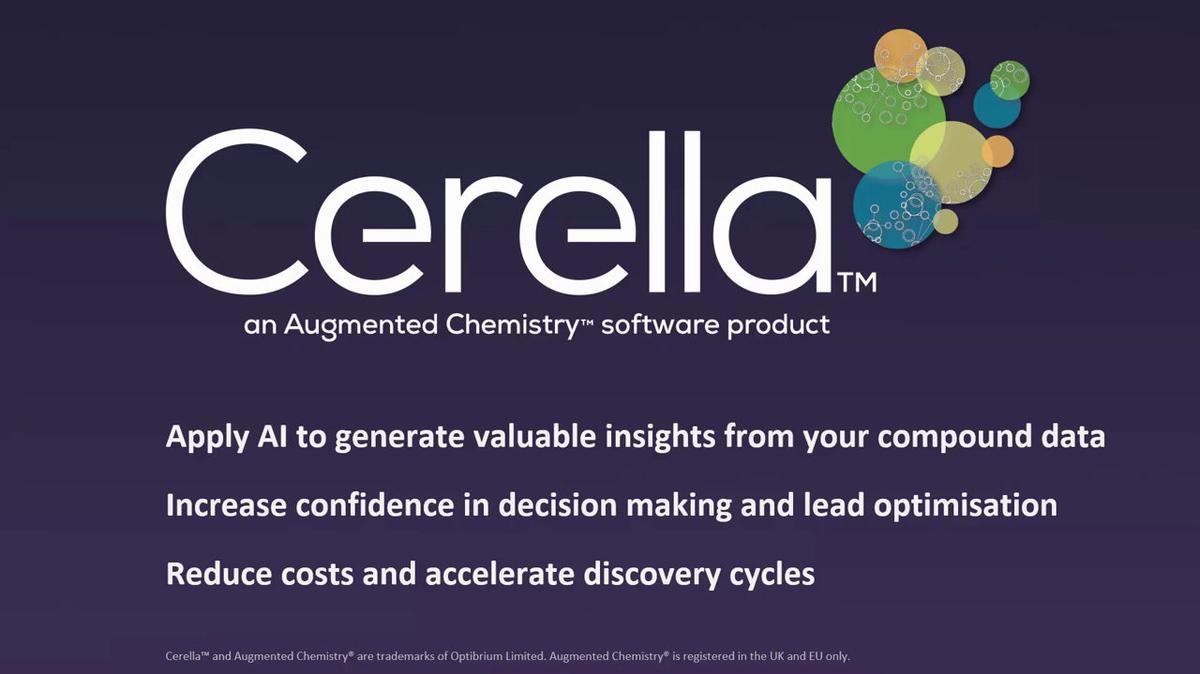
Cerella introduction.mp4
Cerella™ employs a cutting-edge deep learning technique to address challenges in drug discovery data, enhancing efficiency and reducing costs. By identifying high-quality compounds with confidence, Cerella uncovers hidden opportunities arising from missing, uncertain, or inaccurate data and prior...
-

-

Webinar - A Global Deep Learning Model for Global Health Drug Discovery
We described the generation and validation of a 'global' model using deep learning imputation on a data set of 300,000 compounds and 500 experimental endpoints, targeting global health indications. We demonstrated how this global model can be applied to individual optimisation projects, offering...
-
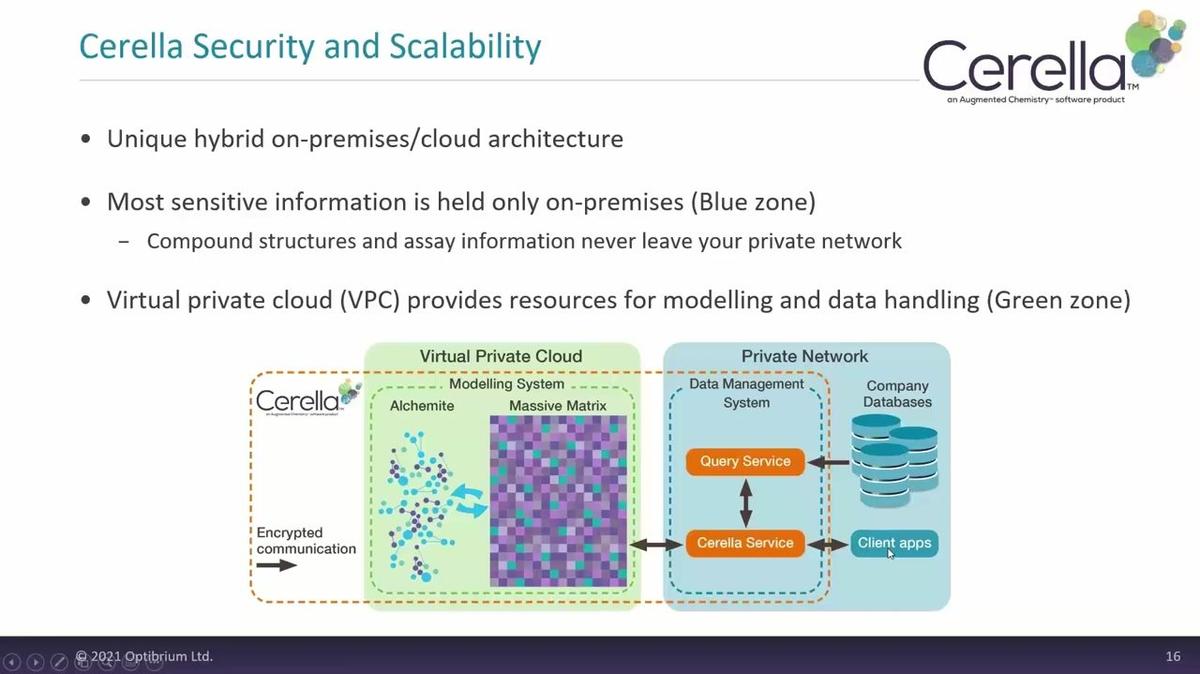
-
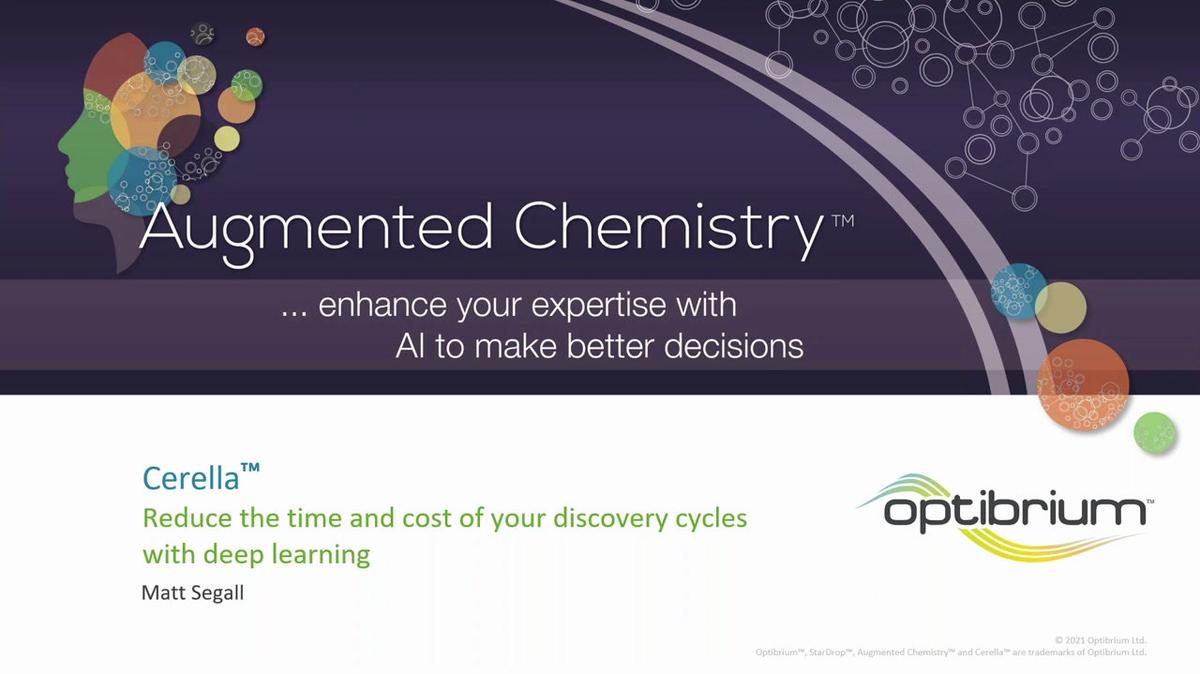
Cerella - Deep learning webinar.mp4
Cerella™: Reduce the time and cost of your discovery cycles with deep learning. See how Cerella™ highlights new opportunities and guides more efficient compound optimisation: • Translate AI insights into planning of experiments • Increase confidence in decision making and lead optimisation • G...
-
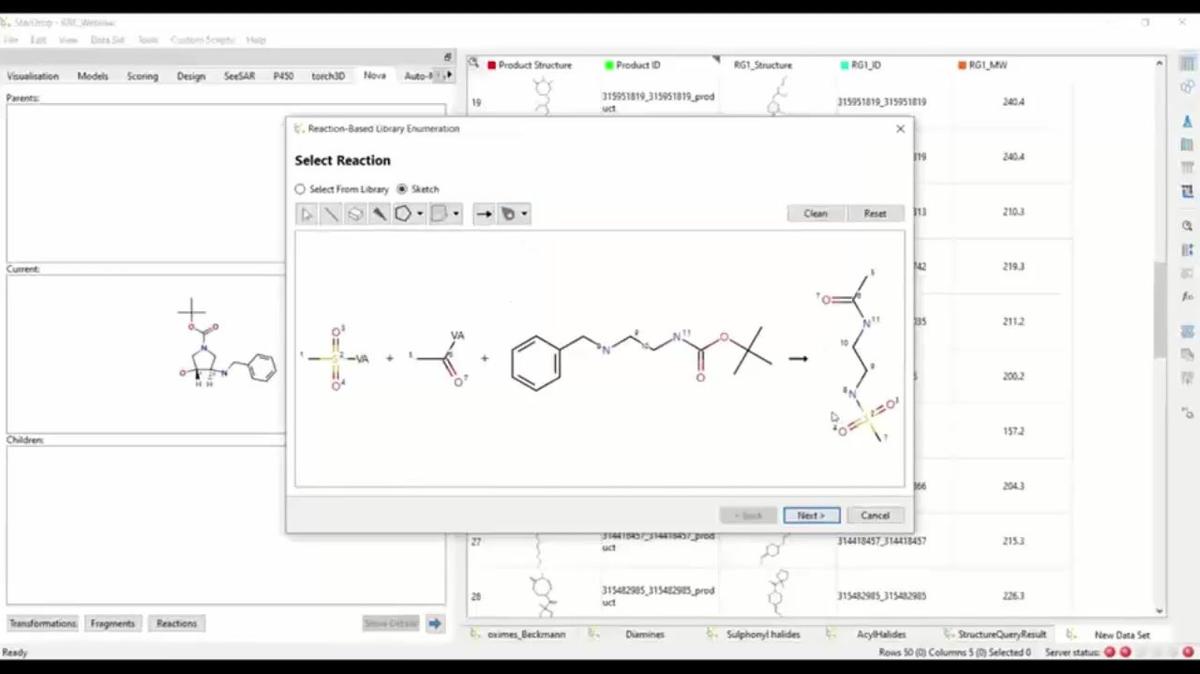
Webinar - Reaction-based Library Enumeration
In this webinar, we demonstrated how to generate virtual libraries by applying tractable, robust chemical reactions to readily available building blocks in a highly flexible and user-friendly environment. We were joined by Imants Zudans, CEO of Molport, who described Molports compound sourcing s...
-

Webinar - Similarity to SAR
In this webinar, led by Peter Hunt and Matt Segall, we discussed a flexible and intuitive framework in which similarity relationships can be interactively navigated to quickly interpret the results, identify important structure-activity relationships (SAR) and use that SAR in new compound design.
-

Reaction-based Library Enumeration
Reaction-based enumeration method offers you a user-friendly, flexible workflow for virtual library design, starting from a reaction you like to apply to your chosen set of reagents. The method is part of StarDrop’s Nova module, complementing the compound idea generation methods based on chemistr...
-

-

-

Drug Discovery Consultants Day 2020 Part II
Recording of Optibrium's 2020 Drug Discovery Consultants' Day, Part II, featuring StarDrop(TM) research and development.
-

Webinar - Predicting PK Parameters and Curves
Accurate predictions of PK would enable better decisions regarding the selection of compounds for in vivo studies, reducing the number of experiments required and the associated cost. But, this is particularly challenging because in vivo PK is influenced by many biological mechanisms. In this we...
-

Drug Discovery Consultants Day 2020 Part I
Recording of Optibrium's 2020 Drug Discovery Consultants' Day, Part I, featuring Augmented Chemistry(TM).
-
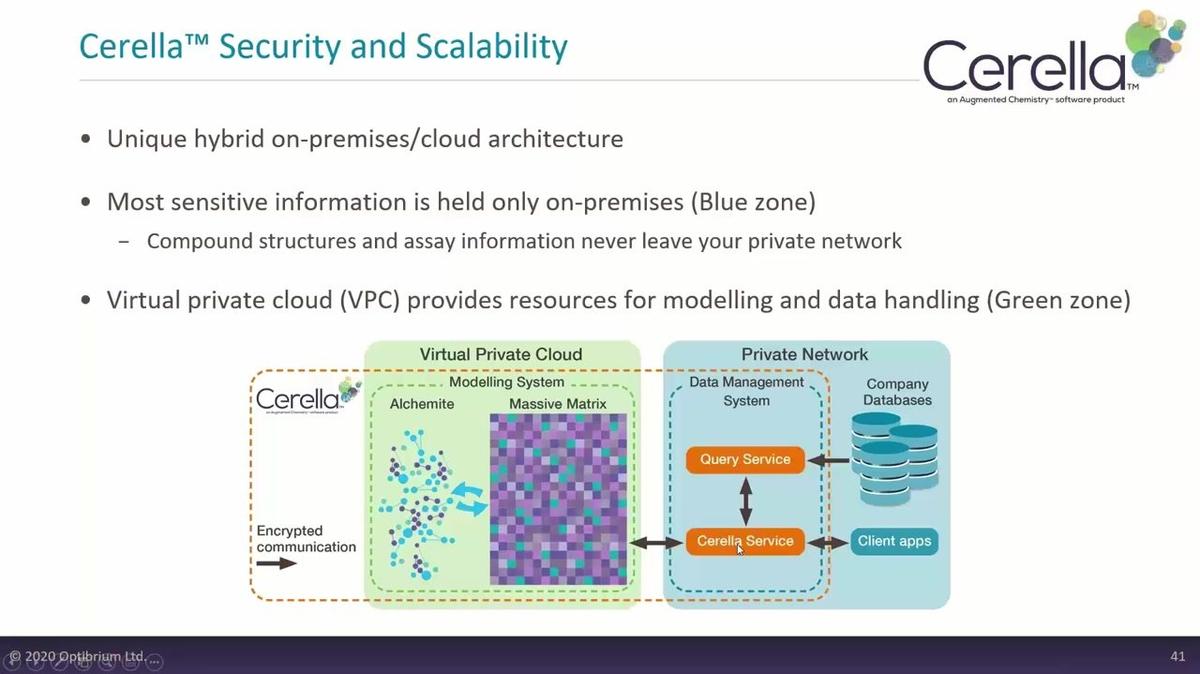
Webinar - Deploying Cerella for Active Learning
In this webinar we demonstrated how this new platform provides interactive access to deep learning imputation to extract more value from your compound data, confidently target high-quality compounds and accelerate discovery cycles. Cerella™ uses a unique, peer-reviewed deep learning method, Alch...
-

Webinar - StarDrop Introduction and Demo
An overview of Optibrium's software and a live demonstration.
-

Symposium - Informatics for Effective Drug Discovery
Informatics for Effective Drug Discovery This symposium was presented by Scott Lyon (Optibrium), Charlie Weatherall (CDD), Jarrod Medeiros (Casma) and E. Adam Kallel (Plexium). Advances in informatics technology are inspiring a new generation of innovative products that streamline and enhance t...
-

Webinar - Large Scale Imputation of Drug Discovery Data using Deep Learning
In this webinar, we described the application of the Alchemite™ deep learning method for data imputation to a pharma-scale data set and were joined by Dr Scott Rowland of Takeda Pharmaceuticals. We presented a case study in which Alchemite was applied to a data set comprising approximately 700,0...
-

Webinar - Translational Toxicology: Data visualisation across phases
This webinar focused on the design of visualisation software for translational toxicology, with particular reference to the challenges that the many different sources of toxicology data pose. We outlined our work on a visualisation application for the EU project, eTRANSAFE, which aims to build a ...
-

Webinar - Practical Applications of Deep Learning to Imputation of Drug Discovery Data
This webinar was presented by our guest Julian Levell (Constellation Pharmaceuticals) and Ben Irwin (Optibrium). We discussed limitations of pharmaceutical data impacting conventional predictive model building and demonstrate how Alchemite™, a novel deep learning imputation algorithm, overcomes t...
-

Webinar - Predicting Reactivity to Drug Metabolism: Beyond P450s – Modelling FMOs and UGTs
After the success of the current P450 models it is time to introduce additional enzyme systems to StarDrop and include enzymes from both modification and conjugation phase. In the webinar we introduce two additional sets of models for the Flavin-containing Monooxygenase (FMO), which works in conj...
-
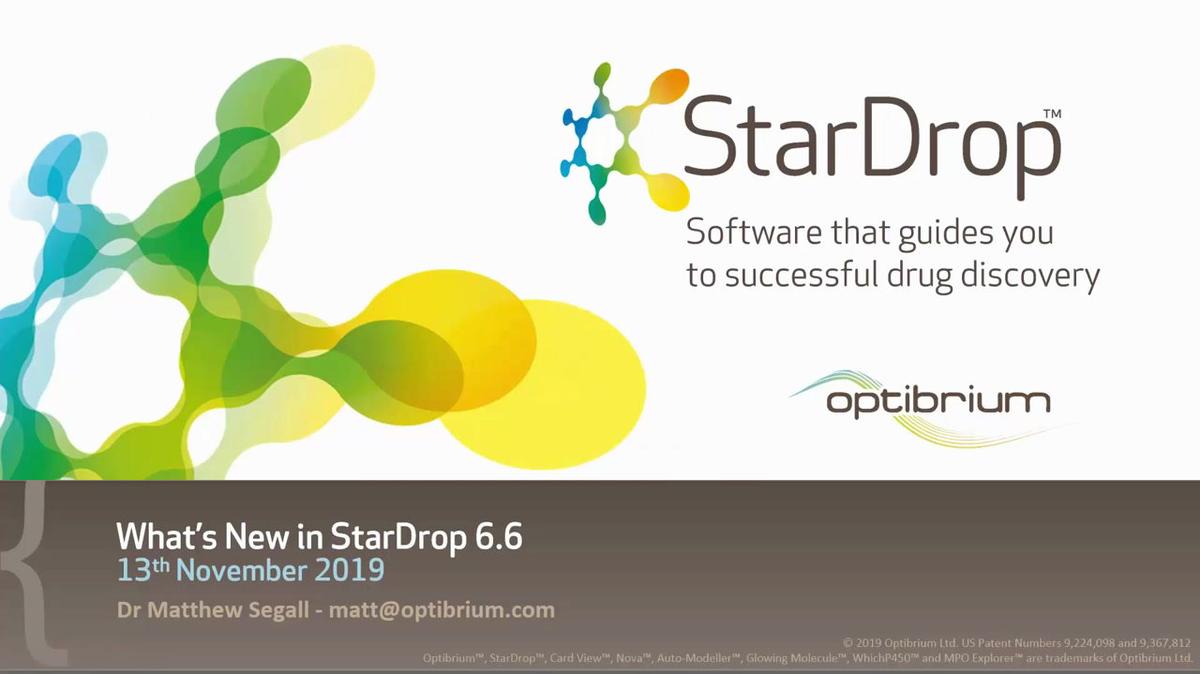
Introduction to StarDrop 6.6
This webinar introduces the exciting new features in StarDrop 6.6, including: A new pKa model, included in the ADME QSAR module, combines quantum mechanics and machine learning to accurately predict acid dissociation constants for your compounds. An extended suite of SeeSAR modules that enhance ...
-

pKa prediction webinar.mp4
The dissociation of a proton from a heteroatom has a significant influence on the charge distribution and interactions of a molecule, influencing many important molecular properties which include pharmacokinetic (PK) attributes such as solubility, tissue or cellular distribution and permeability....
-

Modules and Features: Predicting pKa
This short video gives an introduction to the model of pKa in StarDrop's ADME QSAR module. This model combines quantum mechanics and machine learning to accurately predict acid dissociation constants for your compounds.
-

Modules and Features: SeeSAR Pose
This short video gives an introduction to StarDrop's SeeSAR Pose module that generates compound poses for virtual screening and interactive 3D design using FlexX docking. Fast template docking enables you to edit compounds with real-time feedback, while maintaining an established binding mode.
-

Modules and Features: SeeSAR Affinity
This short video gives an introduction to StarDrop's SeeSAR Affinity module that uses the award-winning HYDE scoring method to analyse your ligand’s binding affinity, related to free energies with visual atomic contributions, and view torsion angle heat maps to assess docked poses..
-

Modules and Features: SeeSAR View
This short movie gives an introduction to StarDrop's SeeSAR View module, that enables you to visualise your ligands in their protein environment and identify the key interactions driving binding affinity in 3D. These structures can be derived from X-ray crystallography or predicted with any docki...
-

Chemical Space Navigation.mp4
In this webinar, presented by our guest, Dr. Franca Klingler from BioSolveIT, we learn how novel search algorithms have been developed to enable you to rapidly search vast chemical spaces and the application of these techniques to speed up the drug discovery cycle on a SAR-by-Space approach to id...
-
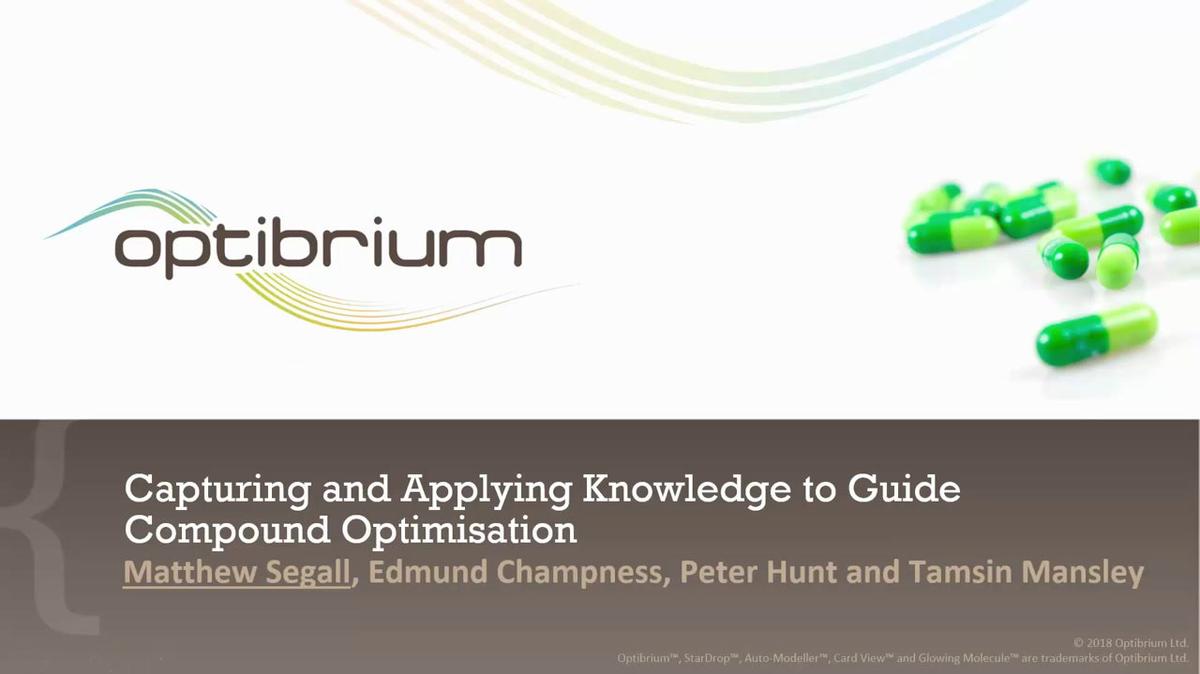
Capturing and Applying Knowledge.mp4
In this webinar, presented by Matt Segall (Optibrium), we explore how computational methods for capturing and sharing knowledge across domains can augment the experience of drug discovery teams to explore a wide range of optimisation strategies in a rigorous and unbiased way.
-
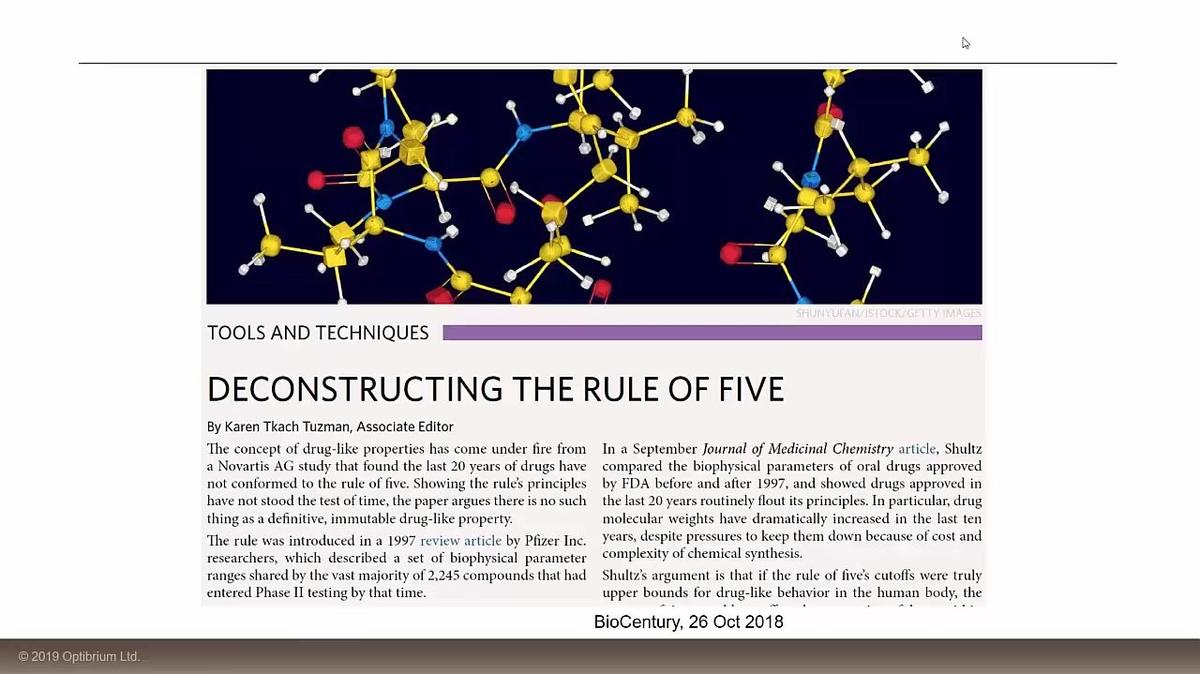
Do We Need to Change the Definition of Drug-Like Properties?
Two decades have passed since the rule of five ushered in the concept of “drug-like” properties. Attempts to quantify, correlate, and categorize molecules based on Ro5 parameters evolved into the introduction of efficiency metrics with far reaching consequences in decision making by industry lead...
-
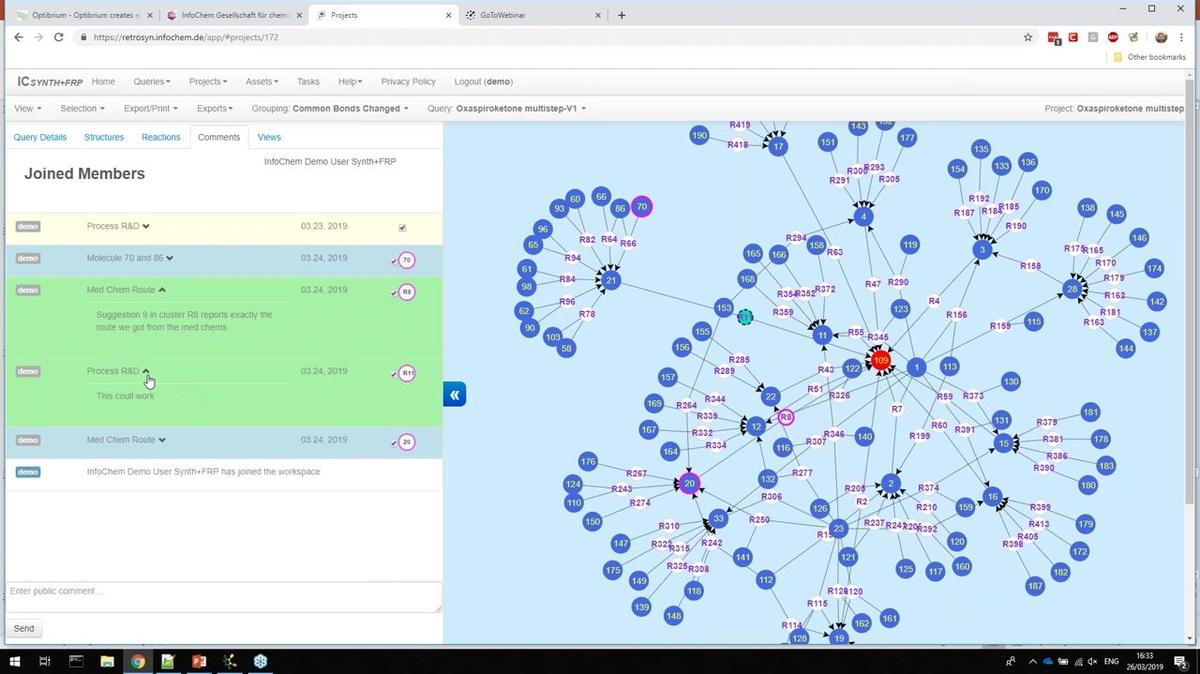
Webinar: Generating Synthetic Pathways for Target Molecules
This webinar helps you understand how InfoChem’s tools for synthesis planning and reaction prediction enhance the chemist’s personal knowledge in organic synthesis bringing new, unbiased ideas.
-
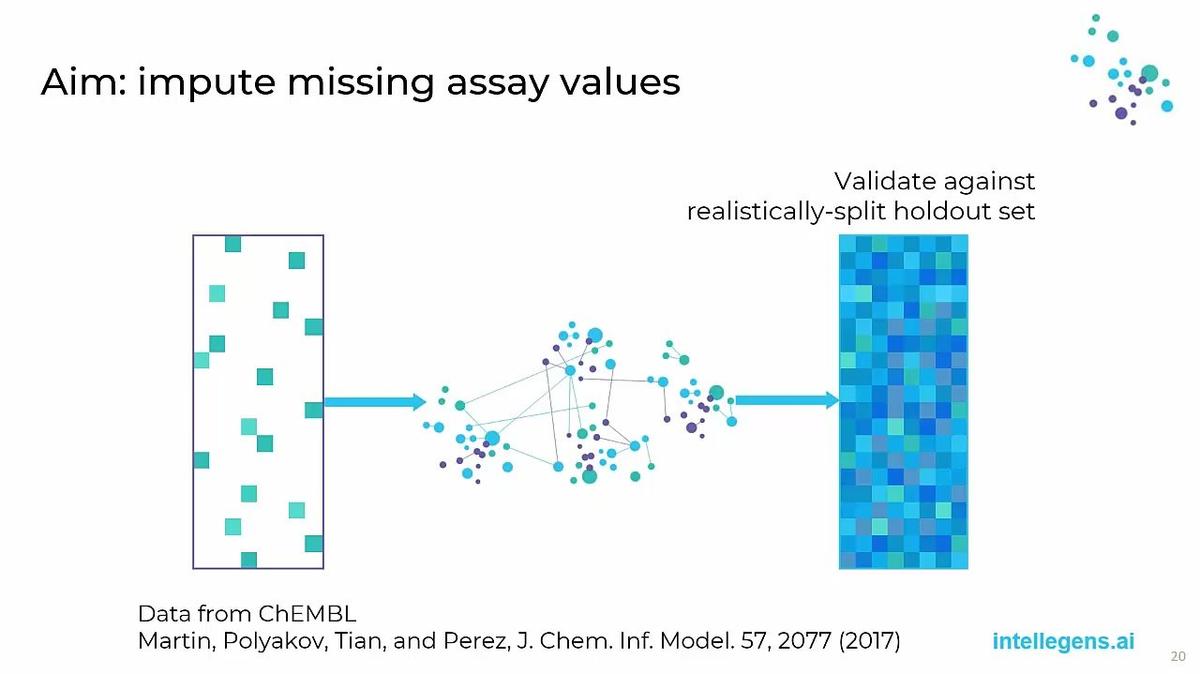
Webinar: Using Deep Learning to Impute Protein Activity
Accurate compound bioactivity data are the foundations of decisions on the selection of hits and the progression of compounds in discovery projects. However, in practice, the experimental data available on potential compounds of interest are sparse; for example, the ChEMBL dataset is just 0.05% c...
-
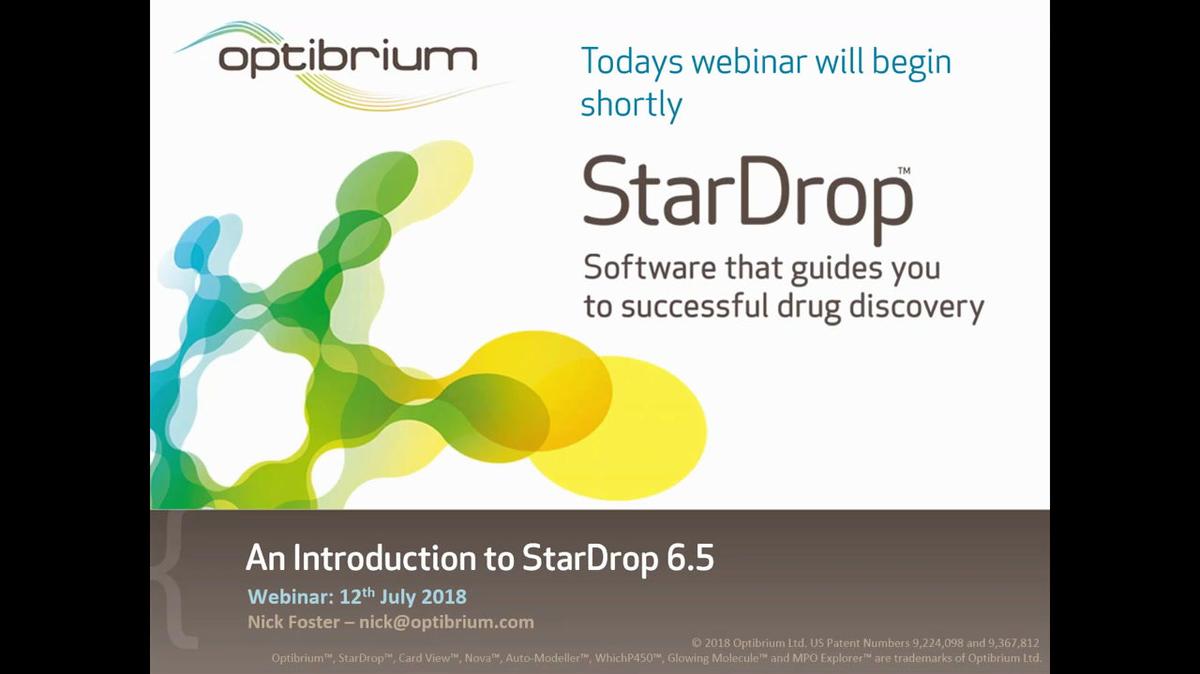
Webinar: An Introduction to StarDrop 6.5
In this webinar we provided an overview of some of the core capabilities of StarDrop alongside new features introduced in StarDrop 6.5 including: • StarDrop’s new and enhanced data visualisation environment, which offers more chart types, additional formatting options and a streamlined user int...
-

Automatic QSAR Model Building and Validation
This example explores the application of the Auto-Modeller module to build a QSAR model of potency against the Muscurinic Acetylcholine M5 receptor, based on public domain Ki data. The resulting model is applied to novel compound to predict their properties and visualise the SAR.
-

Tutorials: Optimising P450 Metabolic Stability
In this example we will explore the feasibility of pursuing a fast-follower for Buspirone, a 5-HT1A ligand used as an anti-anxiolytic therapeutic, which has a known liability due to rapid metabolism by CYP3A4. This example illustrates the use of StarDrop’s P450 metabolism models to explore struct...
